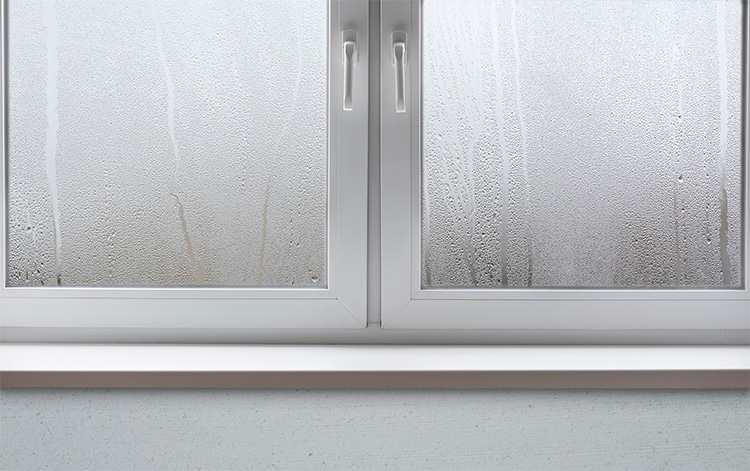What is relative humidity?
What is relative humidity?
Relative humidity is a way to express how humid the air is. At any given temperature, there is water vapour in the air. Relative humidity signifies how much vapour there is in the air, compared to the maximum amount of water vapour that the air can hold at the same temperature. For example: 30 % rH means that the air contains 30 % of the moisture it can possibly hold at that particular temperature. When air can hold no more moisture at a given temperature (100 % rH), the air is said to be saturated. The excess water will condense and appear on surfaces.
Relative humidity has a direct impact on the sense of well-being and comfort of the residents. Dry air leads to dry skin, itchy eyes, and irritated nasal passages. It can cause a bloody nose or an itchy throat and can aggravate symptoms and spreading of the common cold and some respiratory ailments. Your skin and hair can become parched and lose their glow. It also increases static electricity, which you feel in your clothes and hair. You can feel shocks when you touch doorknobs, furniture and carpeting. Dry air is especially an issue in winter and in arid climates.
Impacts of a relative humidity level that is too high

The reverse, humid air, also has its fair share of ailments. It leads to dehydration, fatigue and muscle cramps. Furthermore, it heightens the risk of heat exhaustion, heat strokes and fainting. It can disrupt your sleep and can even impact people’s moods. It also feels uncomfortable and can cause you to feel short of breath. Humid air is especially an issue in damp areas such as bathroom or kitchen and in wet climates.
Dew point temperature
The dew point is the temperature to which air must be cooled to become saturated with water vapour. When further cooled, the airborne water vapour will condense to form liquid water (dew). When air cools to its dew point through contact with a surface that is colder than the air, water will condense on that surface. The measurement of the dew point needs both the temperature and humidity levels. A higher dew point means that the air can hold more moisture.
When the relative humidity is too high, cooling a room by even a few degrees might result in condensation. Condensation can also form on windows, walls and ceilings that are colder than the air temperature. It damages building materials and causes odours in poorly ventilated spaces.
The condensation process will facilitate the growth of moulds and bacteria that can cause respiratory problems and/or allergic reactions. It provides the conditions for dust mite populations to grow, which can affect asthma sufferers.
Since temperature and relative humidity are basic parameters that determine the comfort and well-being of residents, most Sentera sensors can measure these.
Ventilation in function of temperature and relative humidity level is interesting in rooms where large fluctuations in temperature or relative humidity regularly occur, such as kitchens, bathrooms and laundry rooms. The outside temperature and relative humidity are also important parameters to measure before fresh air enters the ventilation system and the building.
